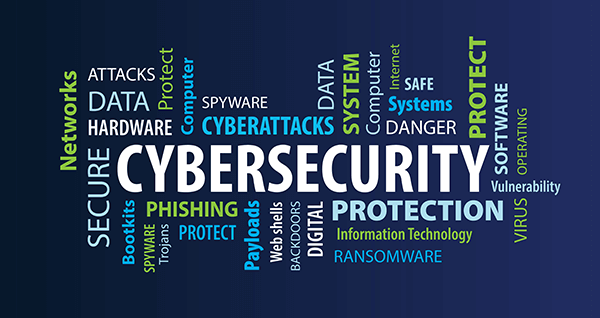In an increasingly digital world, cybersecurity awareness is paramount for individuals and businesses alike. This guide aims to provide practical tips for recognizing and preventing common cybersecurity threats, such as phishing, malware, and social engineering.
Understanding Cybersecurity Threats
Types of Cybersecurity Threats:
Cybersecurity threats encompass a wide range of risks. Phishing involves fraudulent attempts to obtain sensitive information, while malware refers to malicious software designed to harm or exploit systems. Ransomware encrypts data and demands payment for its release, and social engineering manipulates individuals into divulging confidential information.
Importance of Cybersecurity Awareness:
Cybersecurity awareness is crucial to recognize and mitigate potential threats. Understanding the types of cyber threats empowers individuals and businesses to implement effective preventive measures, safeguarding sensitive data and maintaining a secure online environment.
Recognizing Phishing Attempts:
What is Phishing?
Phishing is a deceptive technique where attackers pose as trustworthy entities to trick individuals into providing sensitive information such as usernames, passwords, and financial details.
- Identifying Phishing Emails:
Phishing emails often contain spelling errors, generic greetings, and urgent requests. Encourage users to scrutinize sender addresses and avoid clicking on suspicious links. - Recognizing Phishing Websites:
Legitimate websites use secure URLs (HTTPS). Caution against entering personal information on sites lacking this encryption, and instruct users to verify website addresses before entering any data. - Avoiding Clicking on Suspicious Links:
Emphasize the importance of verifying links before clicking, avoiding downloads from unknown sources, and being cautious with email attachments, as they can contain malware.
Preventing Malware Infections:
What is Malware?
Malware is any software designed to harm or exploit systems. This includes viruses, trojans, and spyware, emphasizing the need for robust security measures.
- Secure Software Downloads:
Users should only download software from reputable sources to avoid the risk of downloading infected or compromised applications. - Regular Software Updates:
Regularly updating software patch vulnerabilities that could be exploited by malware. Encourage users to enable automatic updates for enhanced security. - Using Antivirus and Antimalware Tools:
Antivirus and antimalware tools provide an additional layer of defense. Users should install reputable security software and perform regular system scans.
Guarding Against Social Engineering Attacks:
What is Social Engineering?
Social engineering manipulates individuals into divulging sensitive information. Attackers exploit trust and human psychology to achieve their goals.
- Recognizing Social Engineering Tactics:
Users must be aware of tactics like pretexting (creating a fabricated scenario), baiting (offering something enticing), quid pro quo (something for something), and tailgating (unauthorized access). - Verifying Requests for Sensitive Information:
Encourage users to independently verify requests for sensitive information, especially those received via email or phone, to ensure legitimacy. - Securing Personal and Business Data:
Safeguarding data involves encryption, access controls, and employee education. Ensure that individuals understand the value of protecting personal and business-related information.
Securing Passwords and Authentication:
- Strong Password Practices:
Encourage the creation of strong, unique passwords with a mix of upper and lowercase letters, numbers, and symbols. Advise against using easily guessable information such as birthdays or common words. - Implementing Multifactor Authentication:
Multifactor Authentication (MFA) adds an extra layer of security by requiring users to provide multiple forms of identification. Encourage its implementation to enhance account security. - Regularly Updating and Changing Passwords:
Regularly updating passwords reduces the risk of unauthorized access. Remind users to change passwords after security incidents and to avoid using the same password across multiple accounts. - Using Password Managers:
Password managers securely store and generate complex passwords. Promote their use to alleviate the burden of remembering multiple passwords and ensure the use of strong, unique credentials.
Safe Internet Browsing Practices:
- Utilizing Secure Websites (HTTPS):
Explain the importance of only using websites with HTTPS, indicating a secure connection. Caution against entering personal information on websites without this encryption. - Being Wary of Public WiFi:
Public WiFi networks can be insecure. Advise users to avoid conducting sensitive transactions on public networks and consider using a Virtual Private Network (VPN) for added security. - Employing Virtual Private Networks (VPNs):
VPNs encrypt internet connections, enhancing privacy and security. Recommend their use, especially when accessing sensitive information over public networks.
Educating Employees and Team Members
- Conducting Cybersecurity Training Programs:
Regular training programs enhance employees’ awareness of cybersecurity threats. Cover topics such as recognizing phishing attempts, securing passwords, and reporting suspicious activities. - Regularly Updating Employees on Threats:
Keep employees informed about the latest cybersecurity threats and tactics. Provide real-world examples to illustrate potential risks and the importance of remaining vigilant. - Promoting a Cybersecurity Culture in the Workplace:
Foster a culture where cybersecurity is prioritized. Encourage open communication, reporting of security incidents, and collective responsibility for maintaining a secure working environment.
Monitoring and Responding to Security Incidents:
- Implementing Security Monitoring Systems:
Deploying security monitoring systems helps detect and respond to potential threats promptly. Emphasize the importance of real-time monitoring to mitigate risks. - Creating an Incident Response Plan:
Develop an incident response plan outlining steps to be taken in case of a security incident. This plan should include communication protocols, containment measures, and recovery strategies. - Regularly Conducting Security Audits:
Regular security audits identify vulnerabilities and areas for improvement. Conducting audits helps ensure that security measures are effective and up to date.
Securing Internet of Things (IoT) Devices:
- Understanding IoT Security Risks:
IoT devices pose unique security challenges. Discuss the potential risks associated with IoT devices, including unauthorized access and data breaches. - Updating IoT Firmware:
Regularly update IoT device firmware to patch vulnerabilities. Encourage users to configure devices securely and change default passwords. - Configuring IoT Devices Securely:
Guide users on proper configuration practices for IoT devices, including the use of strong passwords, disabling unnecessary features, and ensuring the use of encryption.
Staying Informed and Adapting:
- Following Cybersecurity News and Updates:
Encourage individuals and businesses to stay informed about the latest cybersecurity developments. Follow reputable cybersecurity news sources and subscribe to updates from relevant authorities. - Adapting to Evolving Threats:
Cyber threats constantly evolve. Stress the importance of adapting security measures to address new and emerging threats, and regularly reassessing and updating cybersecurity practices. - Networking with Cybersecurity Professionals:
Building a network of cybersecurity professionals facilitates knowledge sharing and collaboration. Attend conferences, join forums, and engage with the cybersecurity community to stay connected and informed.
With the tips and best practices outlined in this guide, both individuals and businesses can significantly enhance their cybersecurity awareness.
In the ever-evolving landscape of online threats, staying informed, and implementing proactive measures are crucial for safeguarding personal and sensitive information.
Remember, cybersecurity is a shared responsibility, and together we can create a more secure digital environment.














